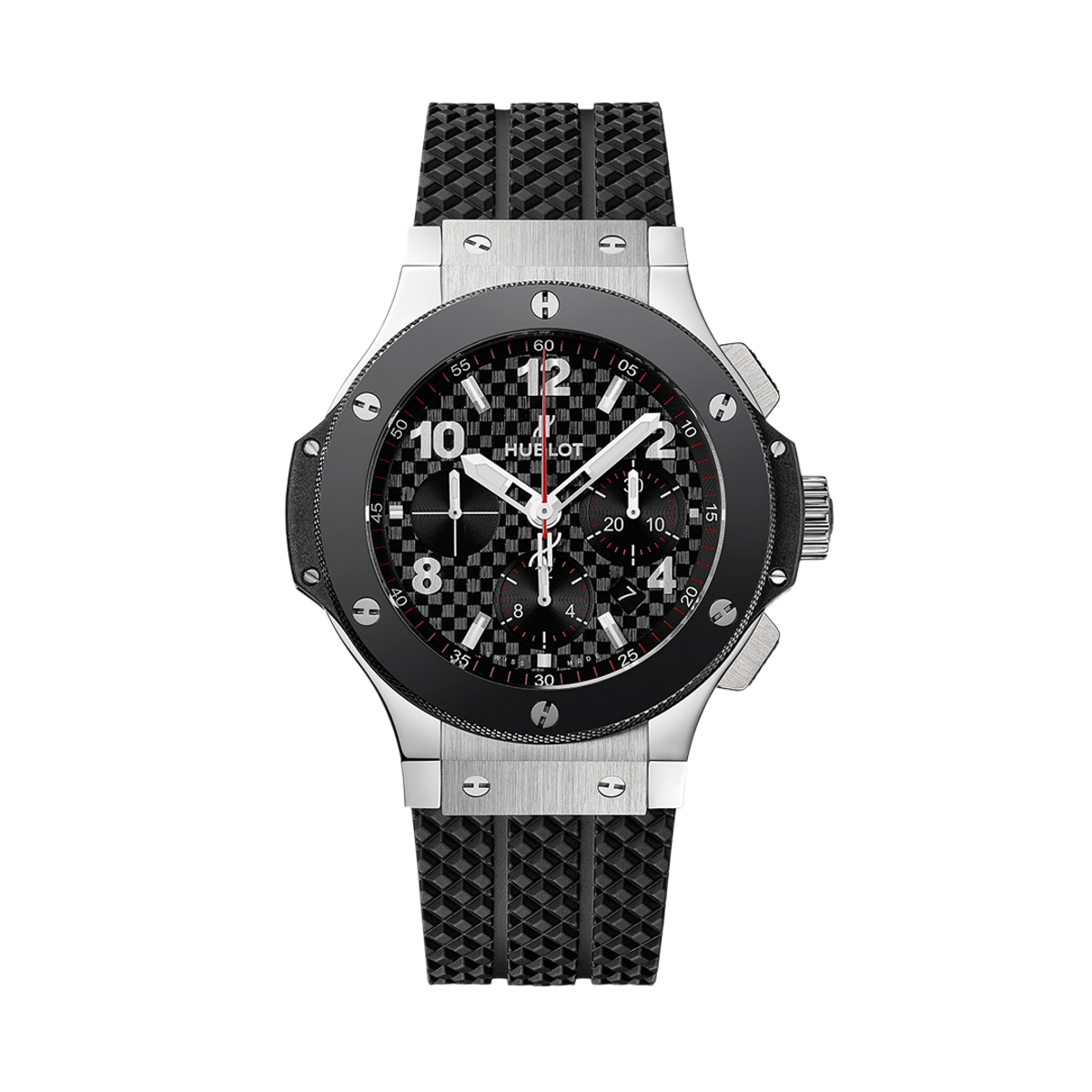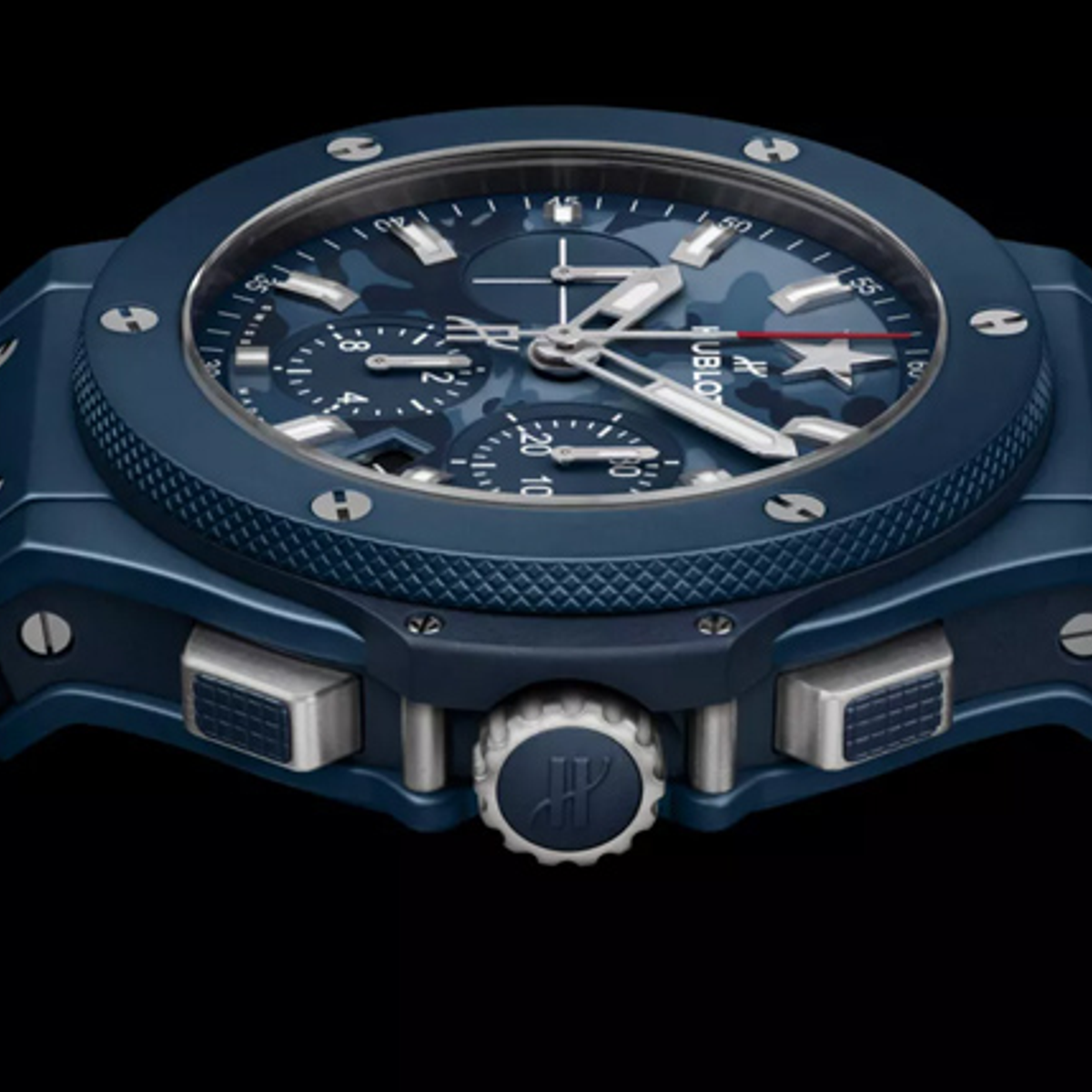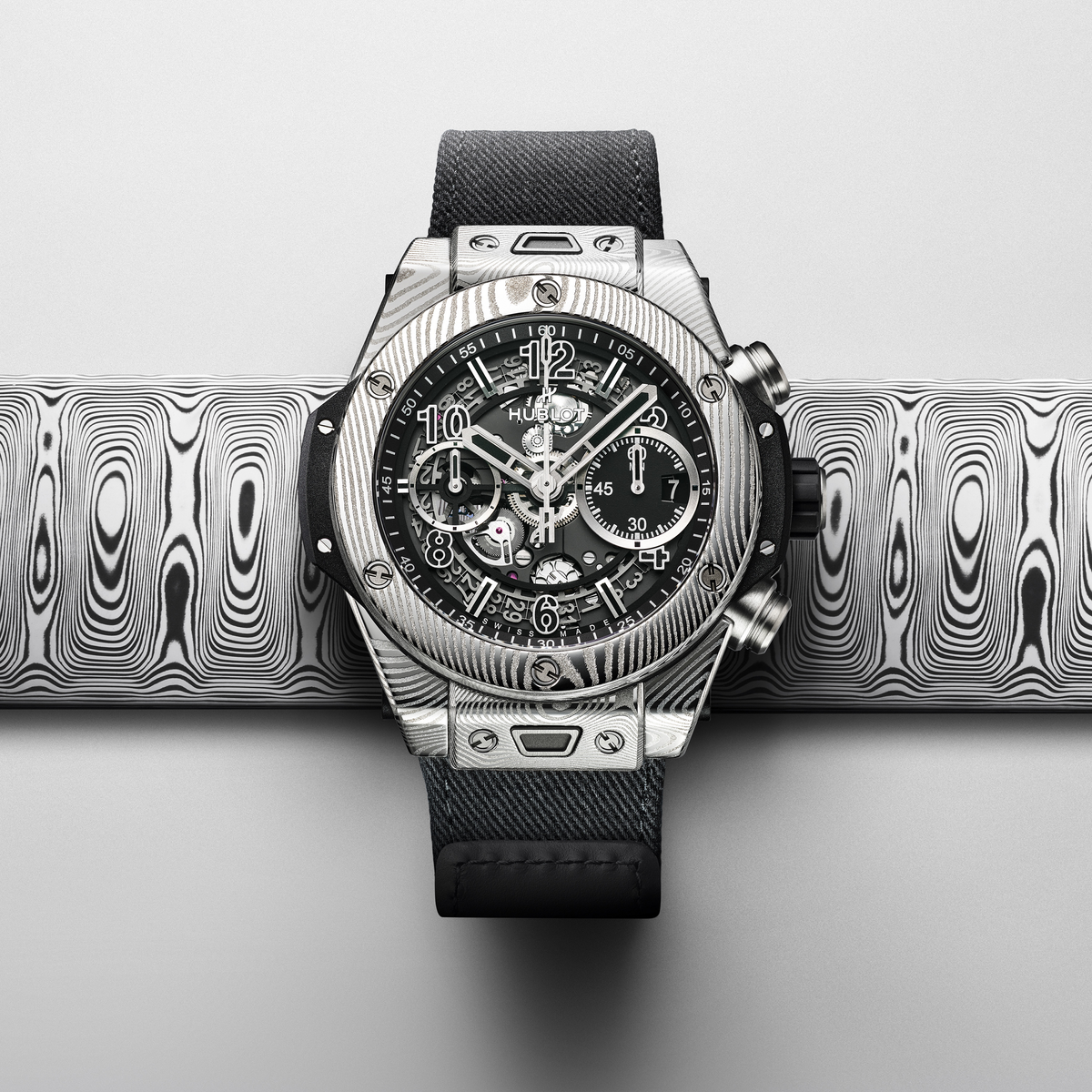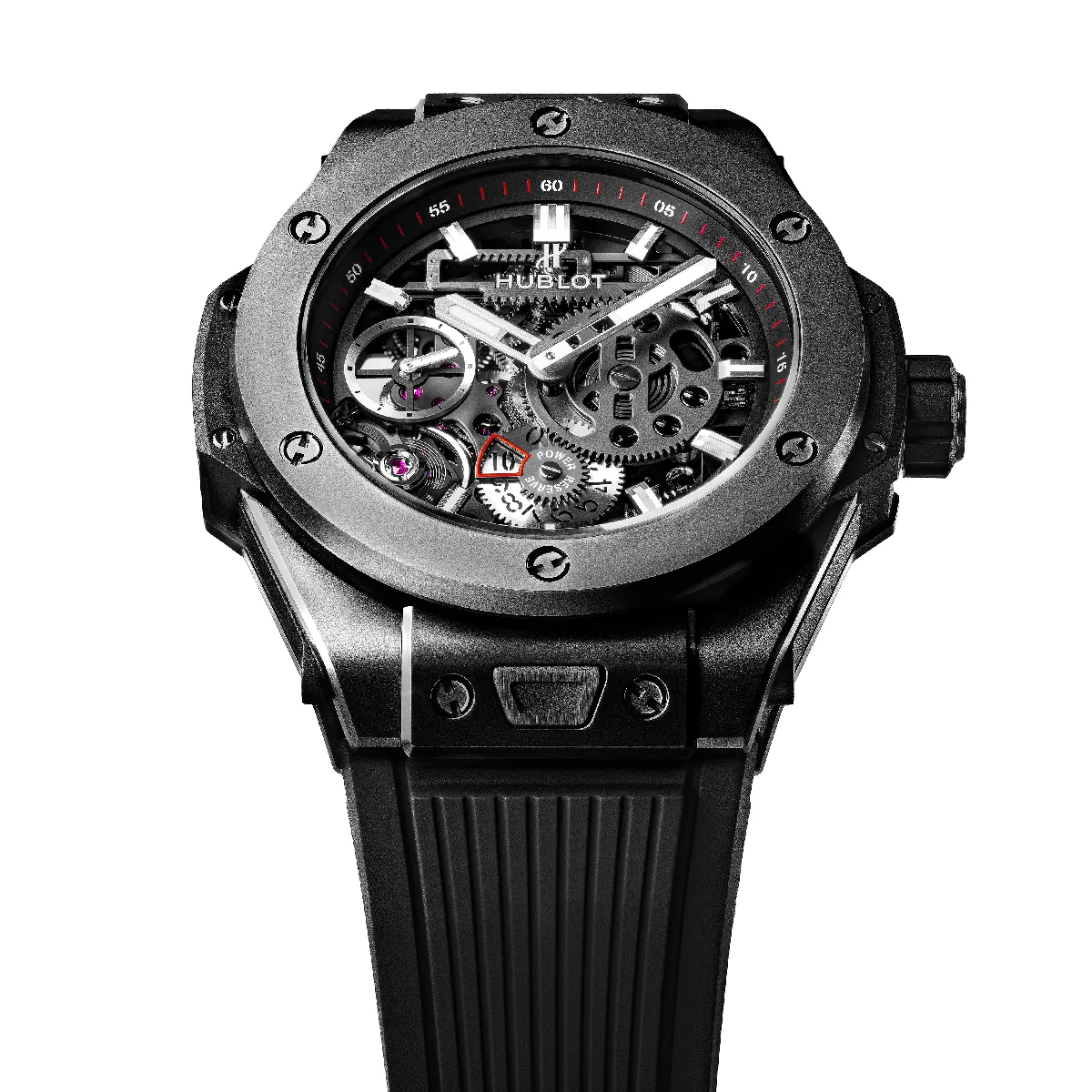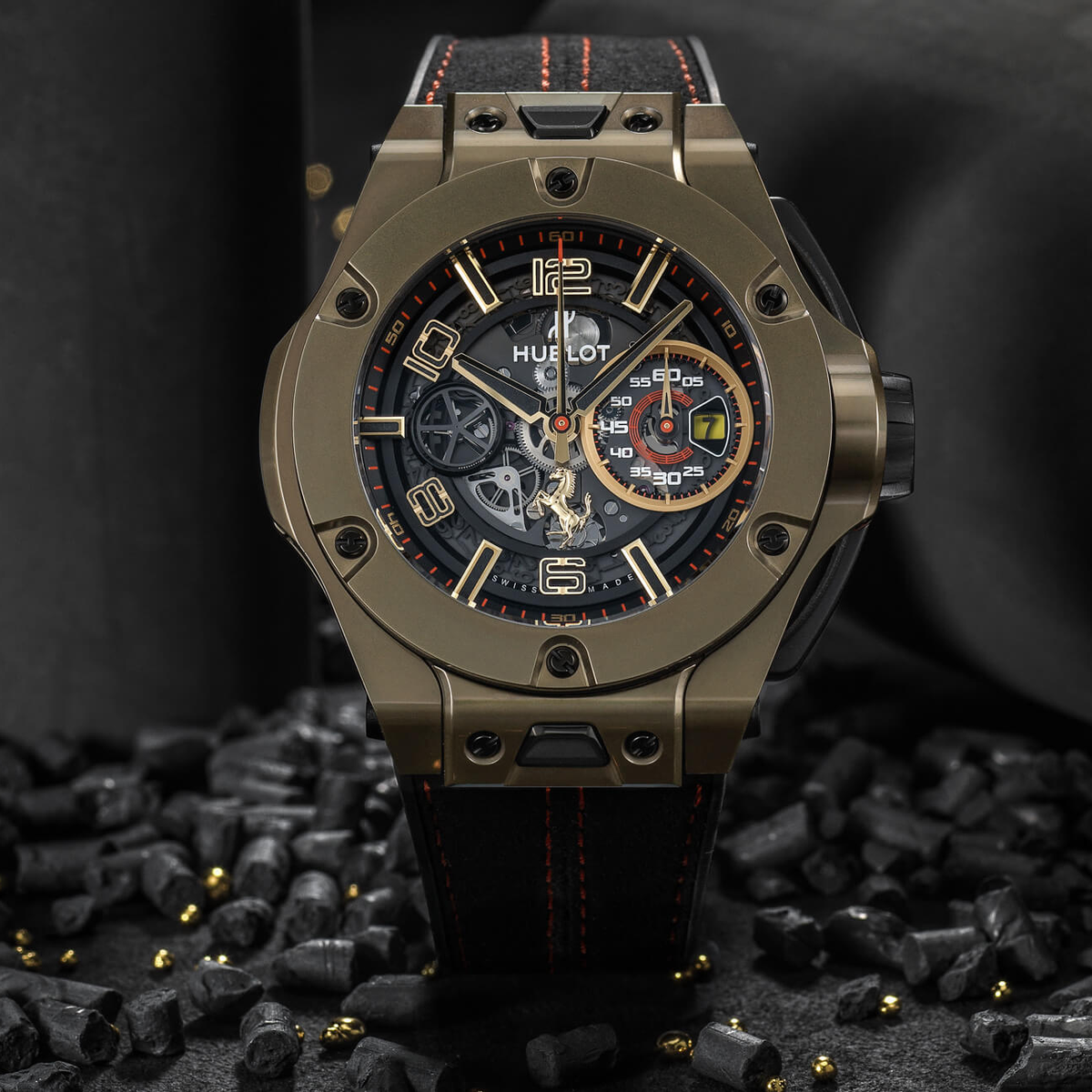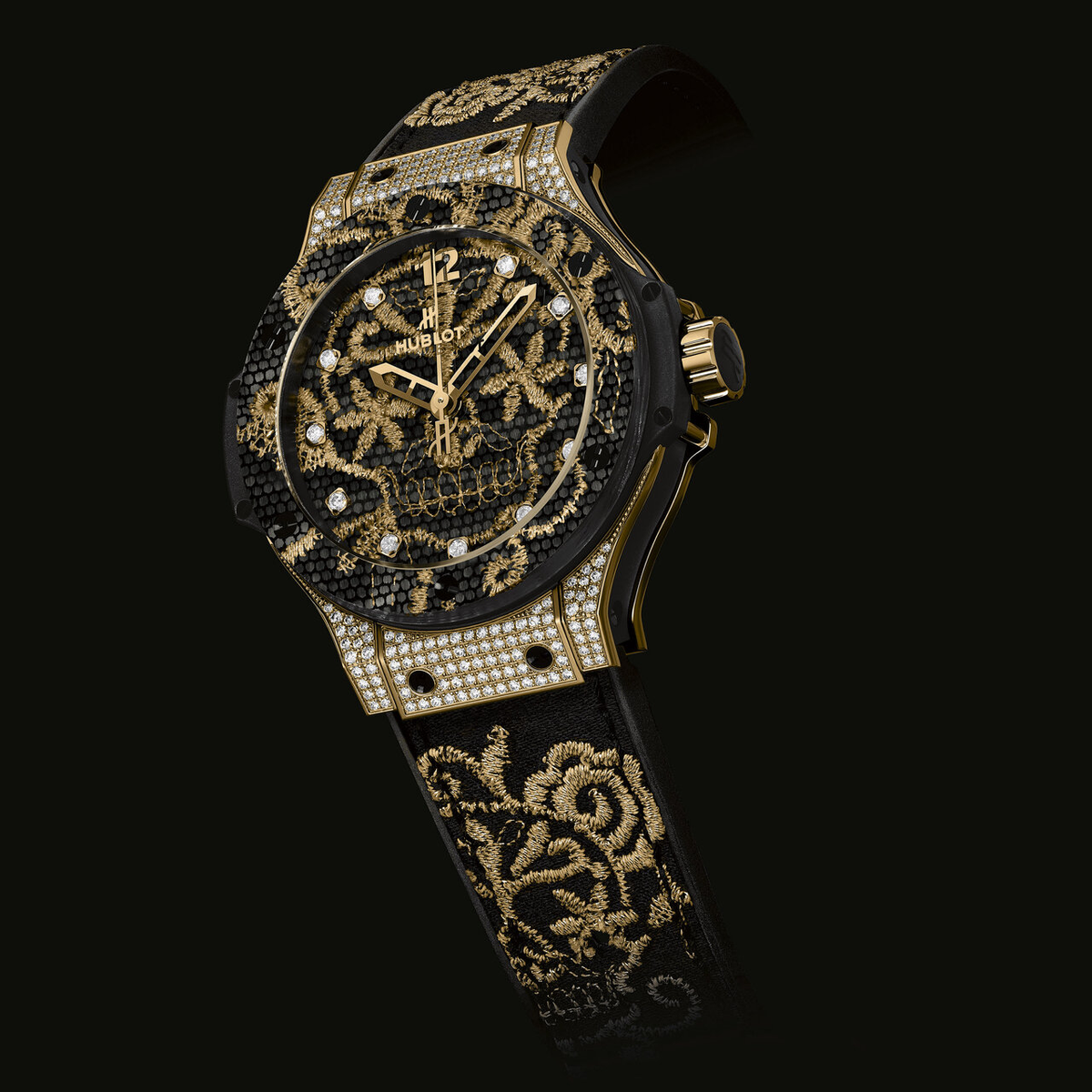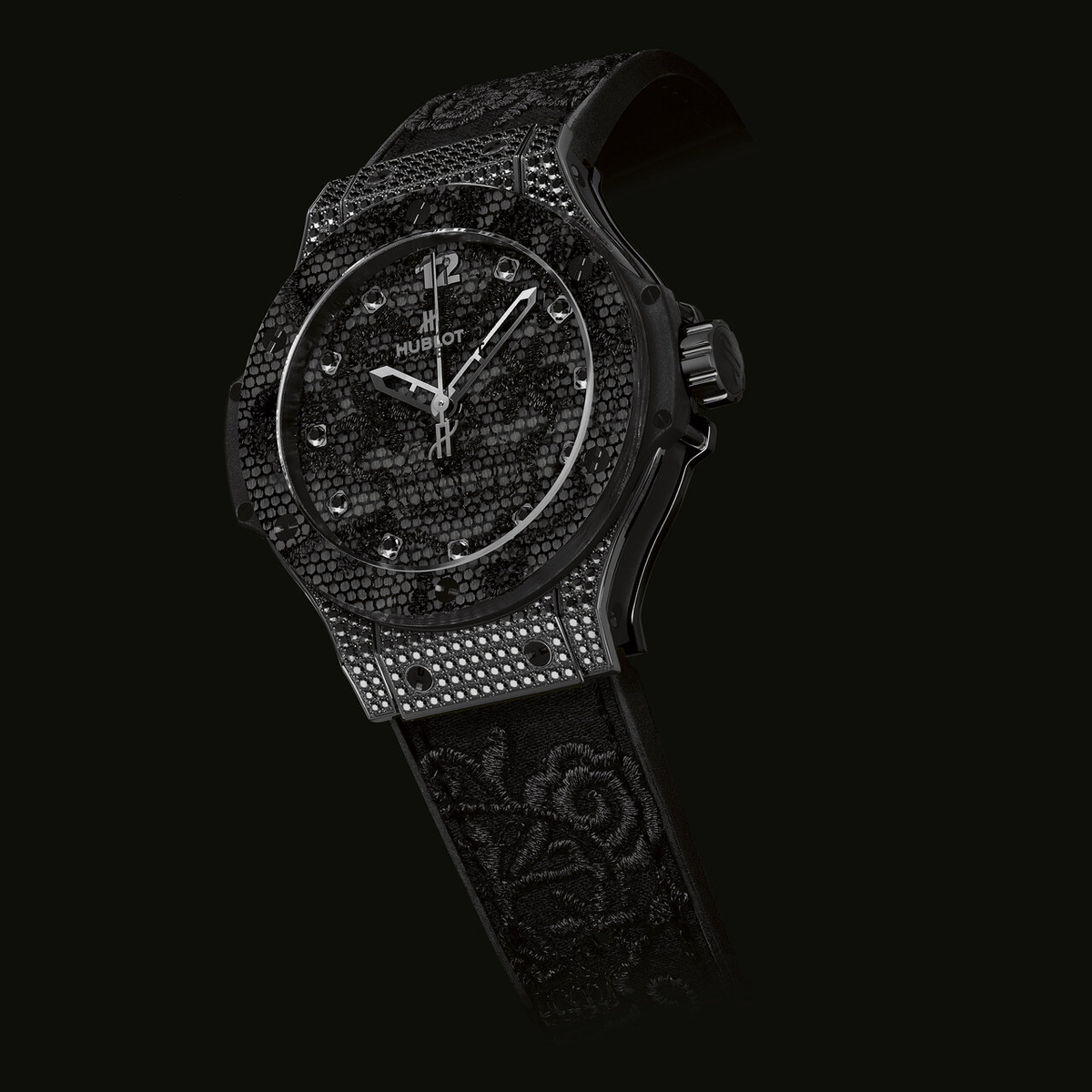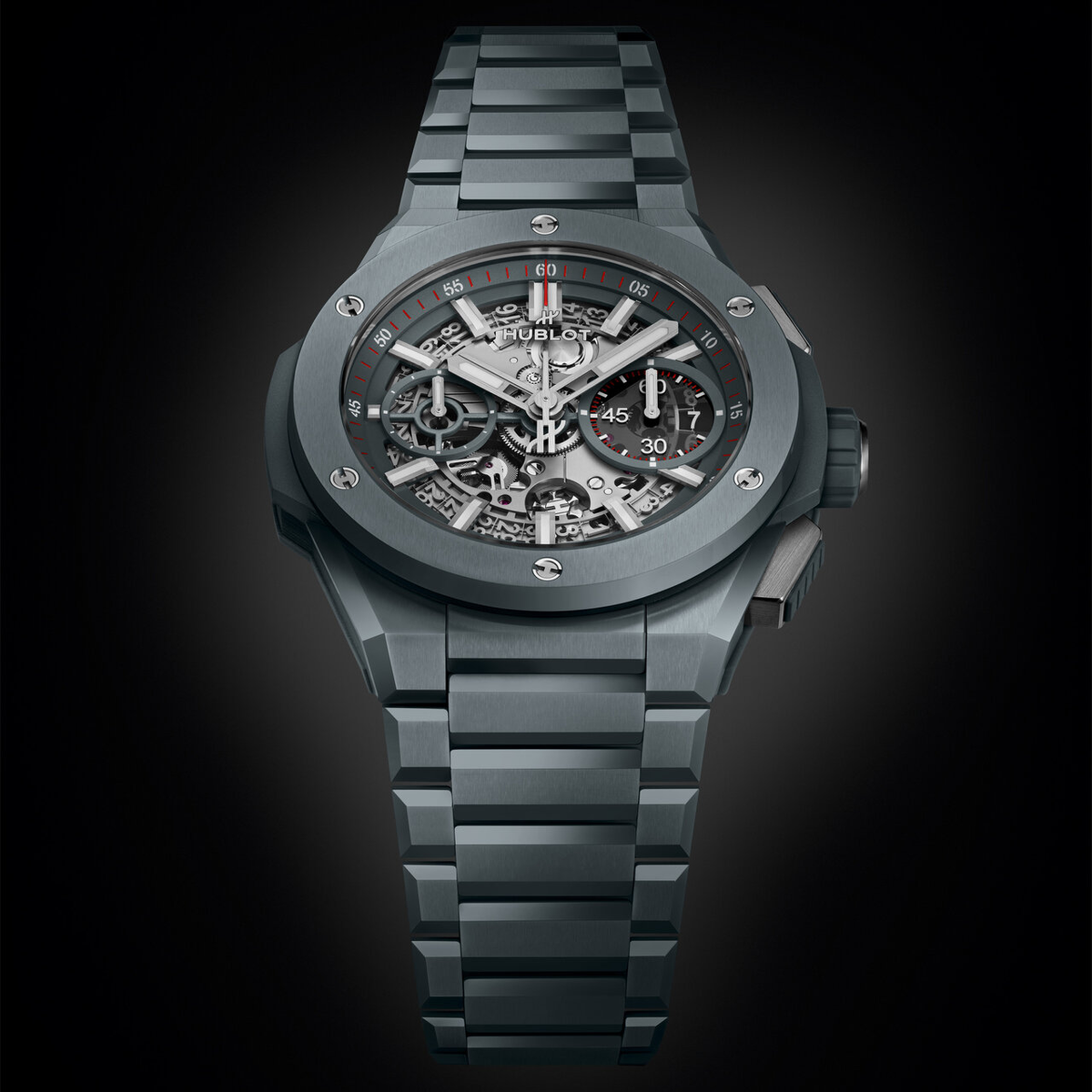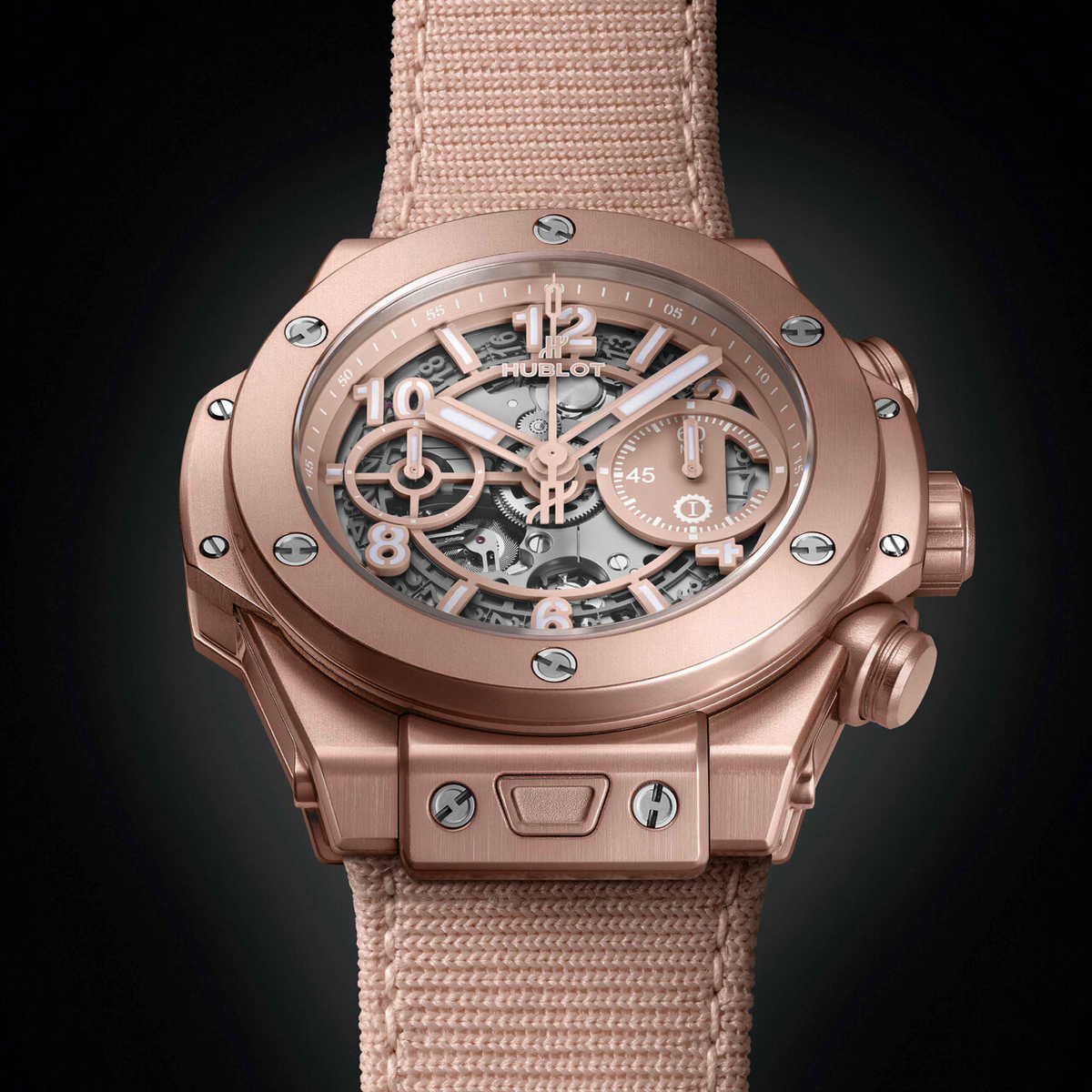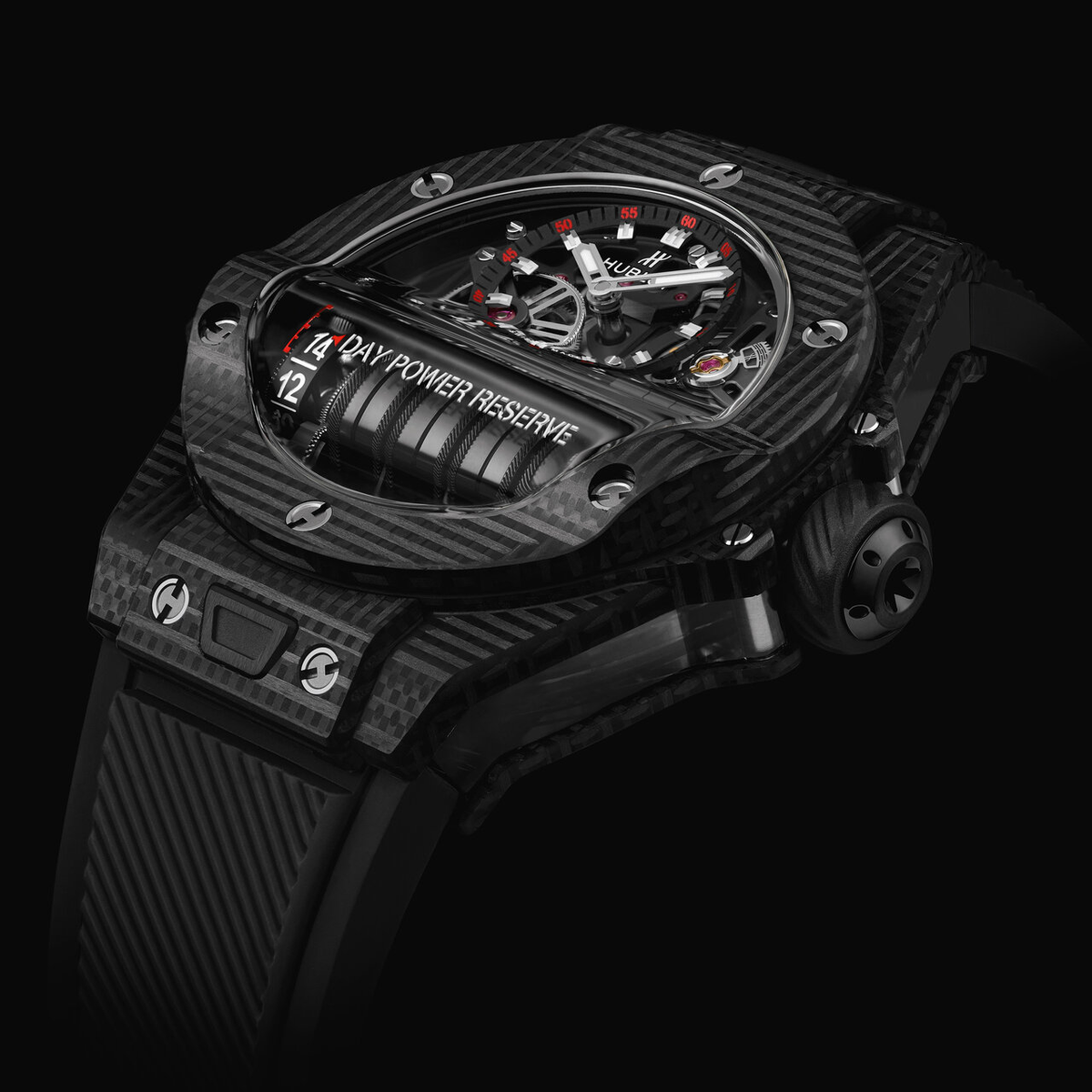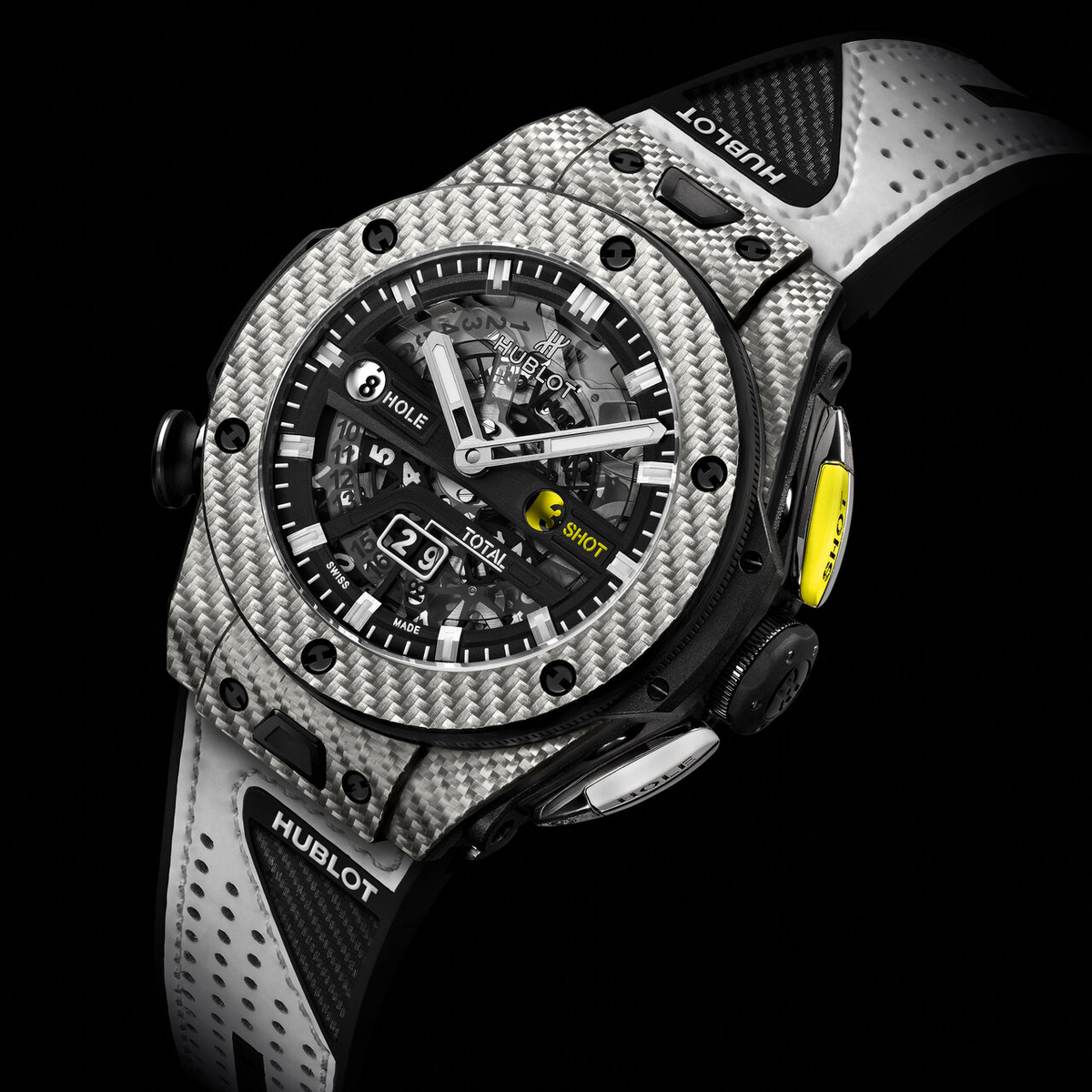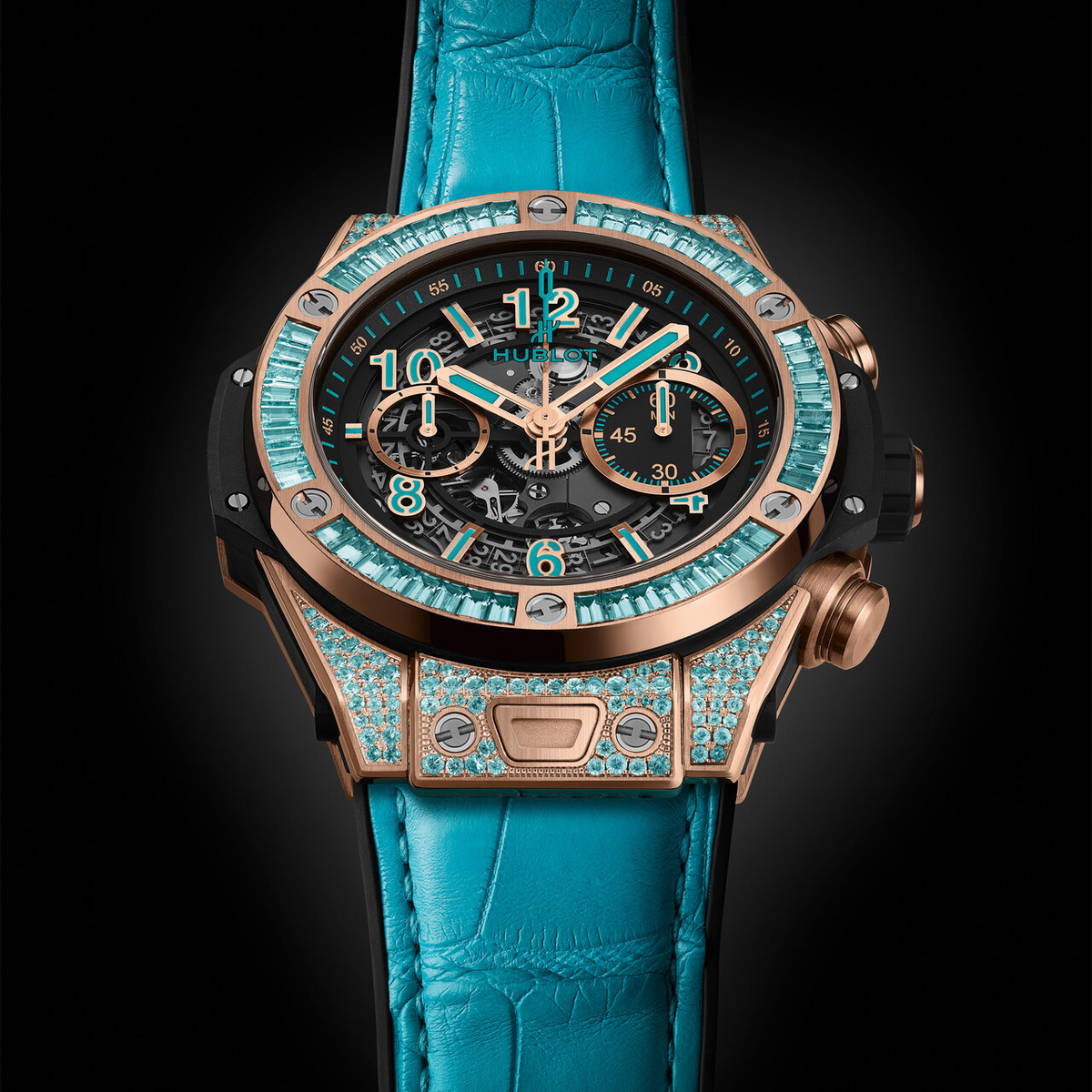In 2013 the Big Bang moved to the next level with the arrival of the first UNICO chronograph movement, Hublot’s first in-house movement.
Launch Year
2005
Functions
hours, minutes, chronograph, date
Movement
mechanical self-winding
Distinctive features
steel and Kevlar case, ceramic bezel, stamped carbon dial, natural rubber strap
Symbolising the renewal of the brand founded by Carlo Crocco in 1980, the Big Bang chronograph appeared in 2005 under the impetus of Jean-Claude Biver, who had taken the reins of the company barely a year earlier. Right from its launch, this model grabbed the headlines. It reprised the porthole shape of the brand’s first model, as well as borrowing an essential aesthetic principle in its combination of original materials such as gold and ceramic, Kevlar and pink gold, tantalum and rubber. Embodying the quintessence of the new Fusion concept that has governed Hublot’s creations ever since, the Big Bang powerfully asserted itself on the watchmaking scene with its robust and sporting design.
Its broad 44.5mm case was first introduced in steel or pink gold and featured a layered construction with Kevlar lateral inserts. The caseband is framed by side ‘ears’, while the crown and pushers are rubber-clad. The carbon powder dial is surrounded by a wide ceramic bezel, accentuated by six H-shaped screws. To drive the Big Bang, Hublot called upon the skills of La Joux-Perret in developing a new chronograph movement. It was careful to match its finish with the new brand codes, with the tungsten carbide oscillating weight featuring a black PVD-treatment on its dimpled surface.
Right from its launch, the Big Bang chronograph won the “Best Design” award at the Grand Prix d’Horlogerie de Genève. Given the commercial success of its new flagship product, Hublot soon began to introduce other material combinations. Carbon and gold, ceramic and steel, denim and diamonds, carbon and silk, sapphire and wool were all favourably received by customers. In 2006 the Big Bang appeared in a new All Black concept, heralding an enduring watch industry trend. Two years later, in 2008, the collection expanded to include a Big Bang for women then, in 2011, embraced grand complications as the Big Bang Cathedral Minute Repeater Tourbillon and Column Wheel Chronograph. However, it was in 2013 that the Big Bang moved to the next level with the arrival of the first UNICO chronograph movement, entirely developed and manufactured in-house. Unique in the industry, it was distinguished by its column wheel with dual coupling visible on the dial side. Hublot also seized the opportunity to make a few tweaks to the original design. Screws, pushers, hour-markers and numerals were revisited, while the One Click system enabling tool-free strap changes made its appearance.
The Big Bang once again hit the headlines in 2015 for its 10th anniversary, when it lent its sporty design to Hublot’s first skeleton tourbillon, complete with a five-day power-reserve indicator. A High Jewellery series of ten fully diamond-set versions – each carrying a million-dollar price tag – also put the Big Bang in the spotlight. Partnerships with FIFA, Ferrari, Italia Independent and various artists have provided numerous opportunities to interpret the Fusion concept.
The next five years saw a stream of variations, both mechanical and aesthetic. The Big Bang MECA-10 All Black increased power reserve to ten days… dwarfed by the 50-day power reserve made possible by the seven series-coupled barrels of the Big Bang MP11 in 3D carbon. For the Big Bang’s exterior, Hublot showed its unrivalled mastery of coloured ceramic and sapphire cases with Big Bangs in an unprecedented palette of shades. A new range with an integrated strap, the Big Bang Integral, launched for the watch’s 15th anniversary. Initial executions in titanium, King Gold or black ceramic were followed by coloured ceramic and time-only versions. In 2022 the Big Bang Integral Tourbillon Cathedral Minute Repeater Ceramic became the first minute repeater watch made from ceramic.
Key Characteristics
- Self-winding wrist chronograph
- Case inspired by a porthole, a fusion of unusual materials
